Boott Cotton Mills Museum
Introduction
Text-to-speech Audio
Images
A view of the first floor of the museum showing the textile machines
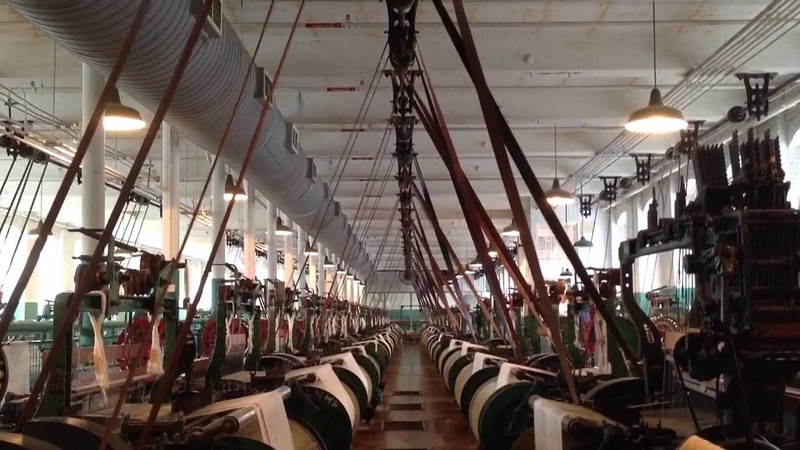
An exterior picture with a trolley tour passing by
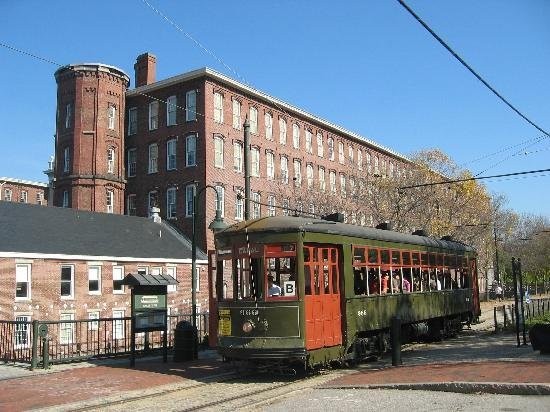
Up close view of one of the machines
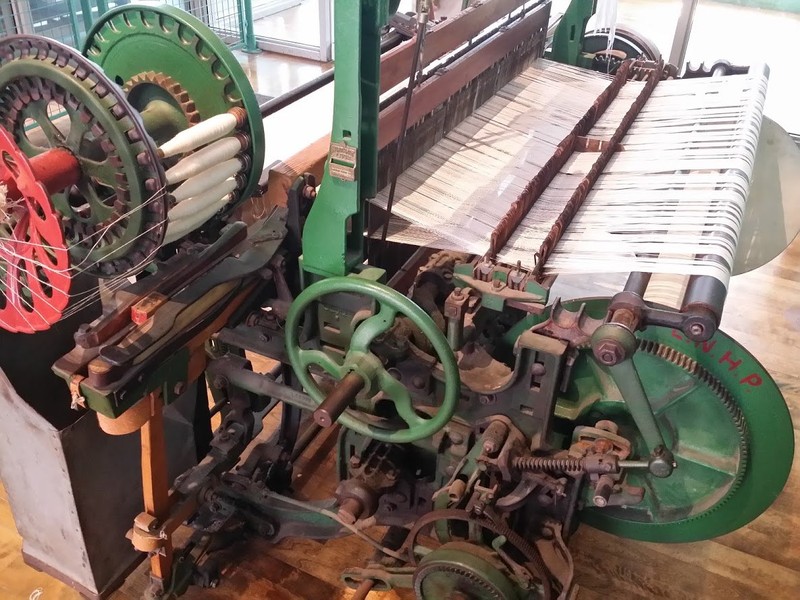
A model of the factory when it was in operation
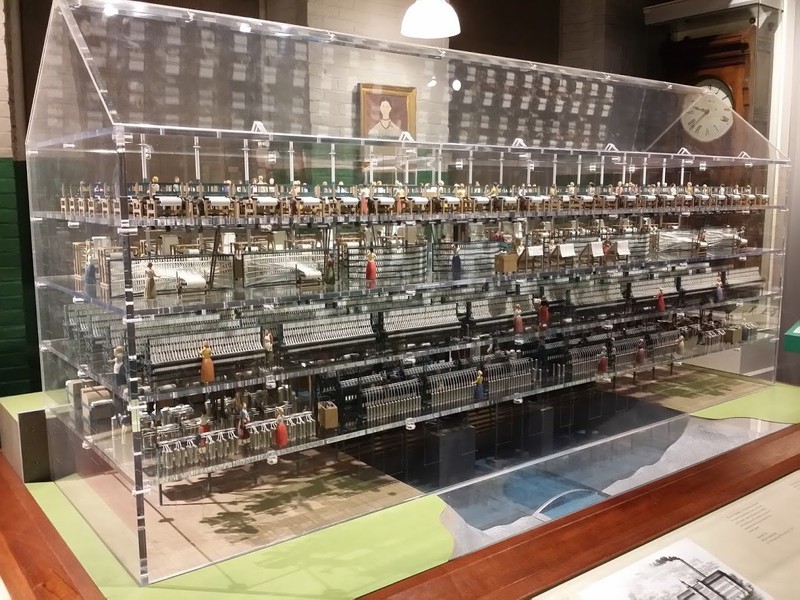
A view of the outside of the factory
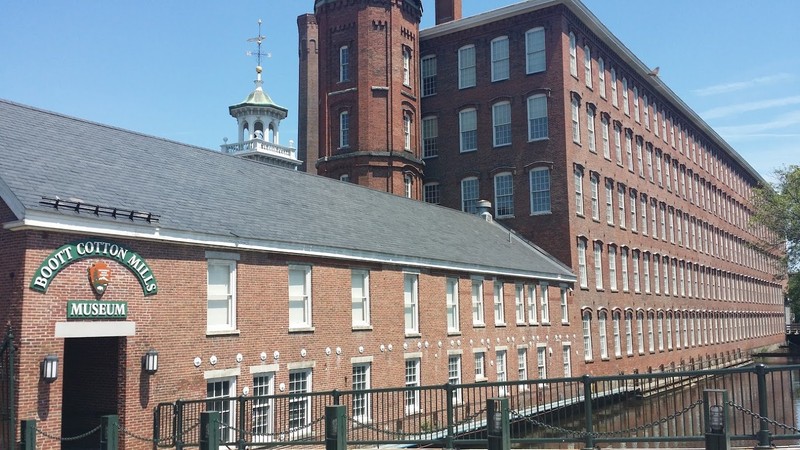
Map of East Chelmsford (later Lowell) in 1821. The area was mostly agricultural at this time.
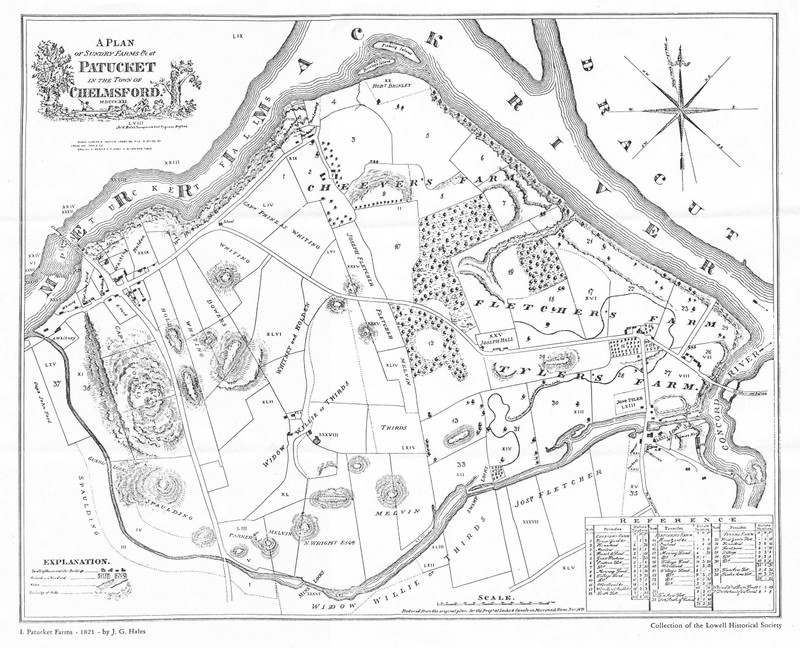
Map of Lowell in 1881. The mills are depicted along the Merrimack River and the density of settlement is very visibly increased in comparison with the 1821 map.
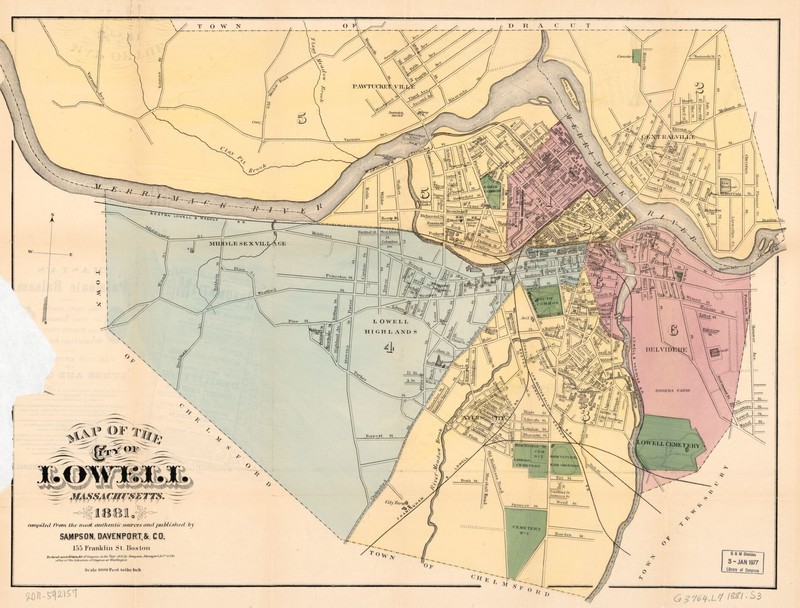
Backstory and Context
Text-to-speech Audio
Built in 1835 by the industrialist Kirk Boott, the Boott Mills were some of the many that lined the Merrimack River in nineteenth-century Lowell. In early 1813, after examining British models, Francis Cabot Lowell successfully constructed a power loom that would cause the expansion and growth of the city of Lowell, known then as East Chelmsford. The city was in a prime location for water-powered factories thanks to the nearby Merrimack River; the Middlesex Canal, meanwhile, provided easy transport of goods to and from nearby Boston. Boott worked for the Merrimack Manufacturing Company, one of the earliest in the area, and was responsible for planning the layout of the company town. Boott's concern was for the factories and dormitories that would house workers, not for the other residents of the town or for the workers' well-being. Prime space along the river was thus reserved for the mills, with the dormitories to their rear.
The shift to factory-produced textiles was one of the major processes of the Industrial Revolution, and it had profound effects on New England society. Seeking ways to keep costs down and secure an easily-controlled labor force, mill owners like Boott recruited young women to work in the mills. During the 1800s, it was uncommon for women to leave the protection of their father, husband or brother. To convince their “protectors” let them come work in the factory out of the safety of the home and keep them away from the dangers of the city, the mill operators built boarding houses which were run by other women of good standing. The residents had to sign a contract that required them to attend church and respect a curfew. The mill girls were expected to work hard and in return were payed between $1.85 and $3.00 a week, which for the time was highest in the country for women, though lower than the wages male workers received. In addition to earning cash wages, laborers in the Lowell factories were exposed to educational and cultural opportunities meant to improve their prospects; women were not expected to work for long in the mills, but rather to stay for a few years before getting married.
During the Civil War however, a shortage of raw materials such as cotton caused many mills to shut down and the mill girls left the area in mass waves. As the girls moved away in search of work, Irish immigrants fleeing the potato famine in Ireland were happy to move to the area and work in the factories for lower wages than the women did. This caused the women workers to no longer be the dominant work force as the Irish immigrants worked for lower wages and also had their children also working in the factory. As time went on the working conditions in the mills went down as wages decreased and longer shifts were required.
Indeed, the owners of Boott Manufacturing Company and other mills pursued the most aggressive "labor-cheapening" policies they could devise. By making workers' tasks as simple and repetitive as possible, they not only exacted a psychological toll on their workforce but also made individual laborers easy to replace. This, in turn, reduced the ability of textile workers to exert collective bargaining power; the mills' initial control over virtually all aspects of the mill girls' lives had echoes in the extreme power imbalance between management and labor that endured for the lifespan of the mills. However, despite the difficulties involved in labor organizing, strikes and other forms of labor resistance were instrumental in securing reduced work hours, higher wages, and better working conditions throughout the history of the New England textile industry.
The Boott Cotton Mills continued in operation until 1954. The mills are now part of Lowell National Historical Park and are managed by the National Park Service.
Sources
Bills, Joe. "Boott Cotton Mills Museum | Local Treasure." Yankee Magazine. April 1, 2018.
Lowell National Historic Park. National Park Service. August 13, 2018. Accessed December 10, 2018. https://www.nps.gov/lowe/planyourvisit/basicinfo.htm.
National Park Service, Boott Mills Counting House and Mill #6 Historic Structure Report, September 9, 2016. Accessed February 19, 2020. https://permanent.access.gpo.gov/gpo84045/LOWE_195664_HSR_accessible.pdf.
Regulations to be Observed by Persons Employed in the Boott Cotton Mills. Massachusetts Historical Society. . Accessed December 10, 2018. http://www.masshist.org/object-of-the-month/objects/regulations-to-be-observed-by-persons-employed-in-the-boott-cotton-mills-2012-03-01.
Chelmsford Historical Society. http://www.chelmsfordgov.com/CHCwebsite/CHC_files/Map1821NorthEast.jpg.
Library of Congress. https://www.loc.gov/resource/g3764l.ct006242/?r=0.51,0.271,0.138,0.079,0.
